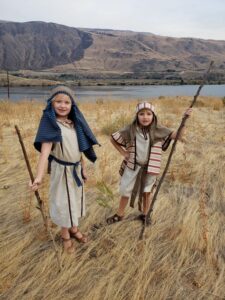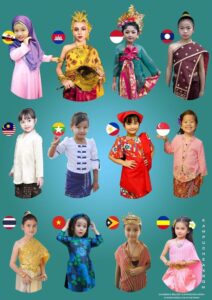Uncategorized
How to Dress Kids for Cultural and Religious Celebrations
Cultural and religious celebrations are an opportunity for families to honor traditions, connect with their heritage, and create lasting memories. Dressing kids for these occasions involves a thoughtful approach that blends tradition, practicality, and personal style. The goal is to ensure children feel comfortable, look appropriate, and understand the significance of their attire.
Here’s a comprehensive guide to dressing kids for cultural and religious celebrations.
1. Understand the Occasion’s Significance
Before choosing an outfit, it’s essential to understand the meaning behind the celebration and its specific dress code.
- Religious Observances: Certain events, like baptisms, bar mitzvahs, or Eid, may require modest or specific attire, such as long dresses, suits, or traditional garments.
- Cultural Festivals: Celebrations like Diwali, Lunar New Year, or Cinco de Mayo often call for traditional clothing unique to the culture being honored.
- Family Traditions: Speak with relatives or elders to understand any customs or expectations for the event.
Understanding the occasion ensures kids’ outfits reflect respect for the event and its cultural or religious significance.
2. Choose Traditional Garments
Many cultural and religious celebrations involve specific attire that reflects the heritage of the occasion.
- Examples of Traditional Attire:
- Indian Celebrations: Kurtas, lehengas, or saris for festivals like Diwali or weddings.
- Chinese New Year: Cheongsam or qipao dresses with intricate embroidery.
- Middle Eastern Events: Kaftans, abayas, or thobes for occasions like Ramadan or weddings.
- Western Religious Ceremonies: White gowns or suits for baptisms, First Communions, or Christenings.
- Where to Find Them: Explore local specialty stores, online retailers, or family hand-me-downs for authentic pieces.
Traditional clothing connects children to their roots and helps them appreciate their cultural heritage.
3. Prioritize Comfort
Kids should feel at ease in their outfits, especially during long ceremonies or active celebrations.
- Fabrics: Choose breathable and lightweight materials like cotton or silk for warmer climates and thicker fabrics like wool for colder seasons.
- Fit: Ensure the outfit is tailored to your child’s size, avoiding overly tight or loose garments.
- Accessories: Avoid heavy jewelry or uncomfortable headpieces that might distract or irritate younger children.
- Shoes: Opt for comfortable footwear, like cushioned sandals or soft loafers, that matches the outfit while supporting long wear.
Comfortable attire ensures kids can participate joyfully without feeling restricted or fussy.
4. Incorporate Modern Twists

While traditional clothing is essential, adding modern elements can make the outfit more practical and appealing for kids.
- Fusion Styles: Mix traditional garments with modern pieces, like pairing a kurta with jeans or a qipao top with leggings.
- Simplified Versions: Opt for pre-stitched saris or adjustable waistbands for easier dressing.
- Bold Prints and Colors: Introduce playful patterns or brighter hues to keep the outfit kid-friendly.
- Contemporary Accessories: Add trendy shoes, belts, or hairpieces that blend with the outfit.
These modern touches can make traditional attire more accessible and enjoyable for kids to wear.
5. Match the Family’s Theme
Coordinated family outfits add a sense of unity and make for stunning photos.
- Color Themes: Choose a specific palette, such as gold and red for weddings or pastel shades for springtime festivals.
- Matching Elements: Incorporate similar fabrics or patterns across family members’ outfits.
- Subtle Coordination: If matching completely isn’t possible, opt for accessories like scarves, ties, or headbands that tie the looks together.
Coordinated outfits emphasize the familial bond and create a cohesive visual representation of your family’s role in the celebration.
6. Teach Kids About the Significance of Their Attire
Dressing for cultural and religious events is an excellent opportunity to teach kids about their heritage.
- Storytelling: Share the history and significance of the garments they’re wearing, such as the symbolism of certain colors or designs.
- Involvement: Let kids choose between options to give them a sense of ownership over their attire.
- Cultural Values: Explain how dressing appropriately shows respect for traditions and the community.
This knowledge helps children connect with their culture and develop pride in their heritage.
7. Consider Practical Accessories
Accessories can enhance the outfit while serving functional purposes.
- Hats and Head Coverings: Items like turbans, hijabs, or kippahs are often essential for cultural or religious events.
- Scarves and Stoles: These add elegance while offering warmth or modesty.
- Jewelry: Simple bracelets, necklaces, or anklets can complement traditional attire without overwhelming the outfit.
- Cultural Props: Items like small flags, fans, or decorative bags can add fun and cultural authenticity to the ensemble.
Choose accessories that elevate the outfit while being practical and age-appropriate.
8. Layer for Versatility
Layered outfits can help adapt to changing temperatures or transitions between indoor and outdoor activities.
- Undergarments: Thermal layers for colder climates or lightweight slips for sheer fabrics.
- Outerwear: Ethnic jackets, shawls, or capes that match the traditional theme.
- Removable Pieces: Scarves or detachable sleeves that can be adjusted based on comfort and temperature.
Layering ensures kids stay comfortable and stylish throughout the celebration.
9. Ensure the Outfit Is Easy to Maintain
Celebrations often involve eating, dancing, and playing, so opt for outfits that are durable and easy to clean.
- Stain-Resistant Fabrics: Choose materials that resist stains or can be easily washed.
- Simple Closures: Velcro, zippers, or elastic waists are easier for kids to manage than complex buttons or hooks.
- Durable Designs: Reinforced seams and sturdy fabrics can withstand active participation.
Practical outfits allow kids to fully engage in the festivities without worrying about ruining their clothes.
10. Capture the Moment

Dressing up for cultural and religious celebrations creates memories worth preserving.
- Family Photos: Plan a group photo to capture everyone’s traditional attire.
- Candid Shots: Document the kids participating in activities or interacting with family members.
- Video Clips: Record moments that reflect the joy and meaning of the event.
These photos and videos will become cherished keepsakes that celebrate your family’s traditions.
Conclusion
Dressing kids for cultural and religious celebrations is about more than just the clothes—it’s an opportunity to connect them with their heritage, teach the value of tradition, and create beautiful memories. By choosing outfits that balance tradition with practicality, parents can ensure their kids feel comfortable, look fantastic, and enjoy the event to the fullest.
At Regal XX Hue, we offer a curated selection of traditional and contemporary kids’ clothing that celebrates cultural diversity and individual style. Explore our collection to find the perfect outfit for your family’s next celebration!


